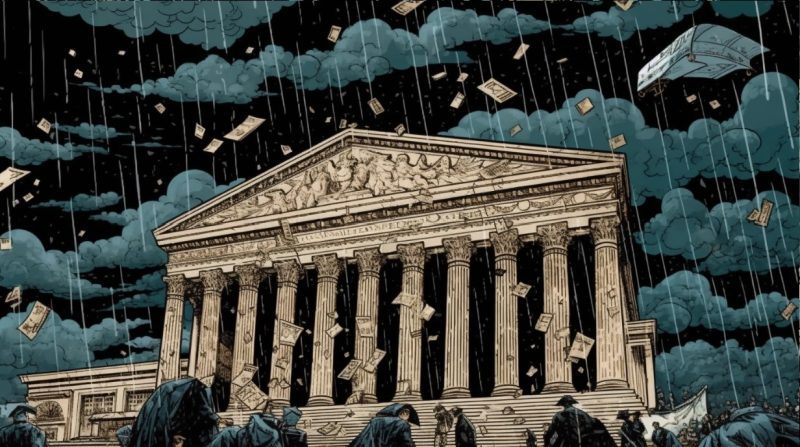
In a world where actions often speak louder than words, the Supreme Court’s recent attempt to introduce a code of conduct is, at best, a half-hearted gesture that borders on the comical. Their announcement, perhaps more of a PR stunt than a sincere commitment to ethical reform, is a masterclass in empty gestures.
The Irony of Unenforceable Ethics
The Supreme Court’s move to adopt a code of conduct is akin to giving a child a rulebook and then leaving the room indefinitely. The lack of enforcement mechanisms turns this supposedly serious endeavor into nothing more than a farce. It’s akin to saying, “Here are the rules, but don’t worry about following them – no one will be checking.”
A Response to Public Pressure or a Band-Aid Solution?
The timing of this announcement, following months of stories highlighting justices’ alleged skirting of ethics rules, is as telling as it is laughable. The court, facing mounting pressure, seems to have cobbled together this ‘code’ more as a placating measure rather than a genuine attempt at reform. It’s reminiscent of a student hastily scribbling an assignment on the bus to school – a last-minute effort to avoid repercussions rather than a thoughtful, meaningful action.
The Hollow Core of the New Code
The new code of conduct, as reported by CNN, appears to be a patchwork of principles already in place for lower courts, adapted with a ‘unique’ spin for the Supreme Court. This raises the question: if these principles were already implicitly followed, why the need for a formal announcement? The answer, it seems, lies more in optics than substance.
Enforcement: The Missing Piece of the Puzzle
The glaring omission in this new code of conduct is its lack of any enforcement mechanism. It’s like setting speed limits on a highway but removing all the traffic police. Steve Vladeck, CNN Supreme Court analyst, aptly points out the hollowness of these rules without a system to monitor compliance or consequences for violations.
A Superficial Nod to Transparency
The document includes guidelines on avoiding the appearance of impropriety and not allowing various relationships to influence official conduct. However, without enforcement, these guidelines are mere words, as weightless as the paper they’re printed on. The code talks about annual training and reliance on the Office of Legal Counsel for ethics issues, yet it’s silent on what happens if these guidelines are breached. It’s like teaching someone the rules of the road but never giving them a driving test.
Recent Scandals and a Questionable Response
This move by the Supreme Court comes hot on the heels of ethics scandals involving Justices Clarence Thomas and Sonia Sotomayor. The response, however, has been tepid. Senate Judiciary Chairman Dick Durbin rightly notes that the code falls short of expectations. It’s a lukewarm response to a boiling issue, leaving much to be desired in terms of accountability and transparency.
The Code: A Mere Formality?
The cynic might argue that this code of conduct is little more than a formality, a box-ticking exercise to calm the rising tide of public scrutiny. It’s a band-aid on a wound that requires stitches – superficially covering the problem but doing nothing to heal it.
Conclusion: A Missed Opportunity for Real Change
The Supreme Court had a golden opportunity to set a precedent in judicial ethics and transparency. Instead, they chose the path of least resistance, issuing a code that reads more like a polite suggestion than a binding set of rules. It’s a missed opportunity, a gesture that fails to inspire confidence or respect. In the grand scheme of things, this attempt at adopting ethics is not just laughable – it’s a stark reminder of the chasm between the ideals of justice and the reality of its implementation.
